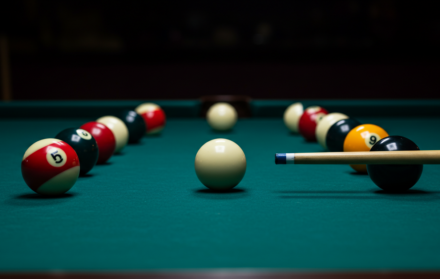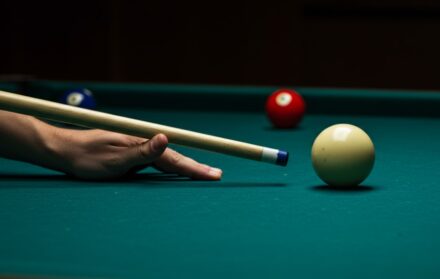
How To Play American Pool
American pool is a thrilling, strategic, and engaging game that captivates players worldwide. Whether you’re a beginner or aiming to hone your skills, learning how to play American pool effectively begins with understanding its core rules and techniques. This guide outlines the essentials, from table setup to executing shots, empowering you to approach the game with confidence.
Played on a 9-foot table with numbered balls, American pool includes formats like 9-ball and 8-ball. In 9-ball, players must strike the lowest-numbered ball first, aiming to pocket the 9-ball legally. In 8-ball, players select solids or stripes, pocketing their group before sinking the 8-ball. Correct racking is crucial: the 1-ball sits at the apex for 9-ball, whilst the 8-ball is positioned at the centre for 8-ball.
A powerful break shot, combining strength and precision, sets the game’s pace by scattering balls strategically. Mastering cue control, stance, and spin—such as topspin for follow or backspin for draw—improves positioning. Practise bank shots and defensive plays to outsmart opponents. With these fundamentals, you’re well-equipped to enjoy and excel in American pool.
1. Understanding the Basics of American Pool
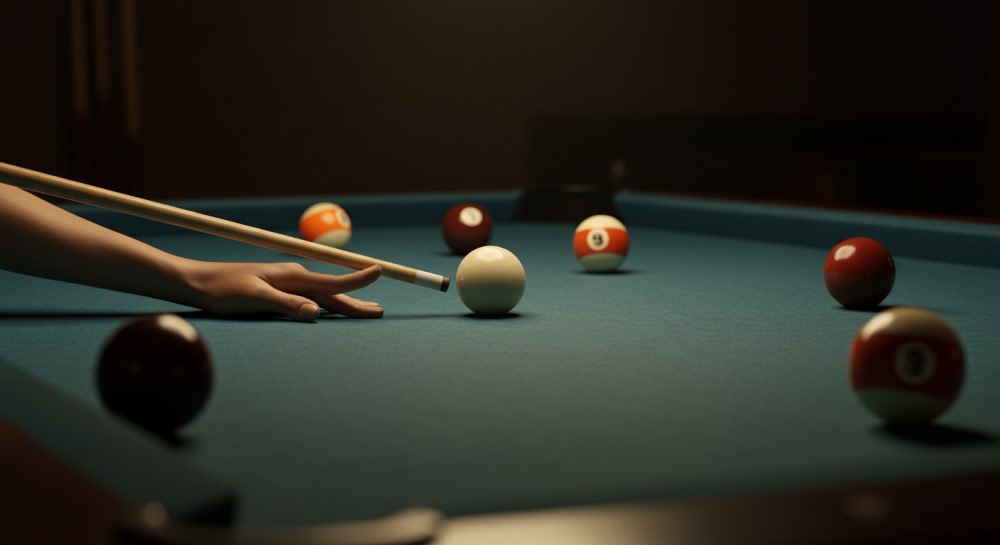
American pool is typically played on a 9-foot table with six pockets and uses larger balls than British pool. The most common variants include 8-ball, 9-ball, and 10-ball, each with its own specific rules. However, 8-ball is the most widely played and the version we’ll primarily reference throughout this guide.
In 8-ball, there are 16 balls: one cue ball (white) and 15 object balls (numbered 1–15). Balls 1–7 are known as solids, and 9–15 are stripes. The aim is to pot all your designated group (either solids or stripes) and then legally sink the black 8-ball.
The game starts with a break shot, and the player who pots a ball first continues with that group (stripes or solids). If no balls are potted from the break, the turn passes. Fouls, such as potting the cue ball or hitting the wrong group first, give the opponent ball-in-hand, allowing them to place the cue ball anywhere on the table.
The key skills in American pool revolve around cue control, shot planning, position play, and game strategy. Unlike snooker, which is often played more defensively, American pool rewards aggressive and calculated potting.
From casual pub games to intense competitions, American pool offers a great balance of accessibility and depth. With some practice, anyone can enjoy this fast-flowing and exciting game.
2. Equipment You’ll Need to Play
To play American pool properly, you’ll need the right gear. While pool halls provide everything, knowing what’s involved can help if you’re setting up a home table or just keen to understand the setup.
Pool Table
An American pool table is usually 9 feet in length, with wider pockets than a British table. The surface is covered in felt, and the table has six drop pockets – one at each corner and one on each side.
Balls
American pool balls are 2 1/4 inches (57.15 mm) in diameter. The set includes 15 numbered balls and one white cue ball. Balls 1–7 are solid, 9–15 are striped, and 8 is black.
Cue Stick
Pool cues are generally between 57–59 inches long. A quality cue makes a big difference in your control and accuracy. Beginners can stick to standard one-piece cues, but intermediate players often use two-piece cues with customisable tips.
Chalk
Chalking your cue tip before each shot adds friction between the cue and the cue ball, reducing miscues. It’s a small but essential habit for every player.
Triangle Rack
Used to set up the balls at the beginning of the game, the triangle holds all 15 balls tightly together in the correct formation.
Bridge Stick
In shots where you can’t comfortably reach, a bridge stick can be placed on the table to steady the cue. Not every venue has one, but it’s handy for longer shots.
Understanding your tools helps you play smarter, and even if you’re just having fun, good equipment can boost your confidence and performance.
3. Setting Up the Game Correctly
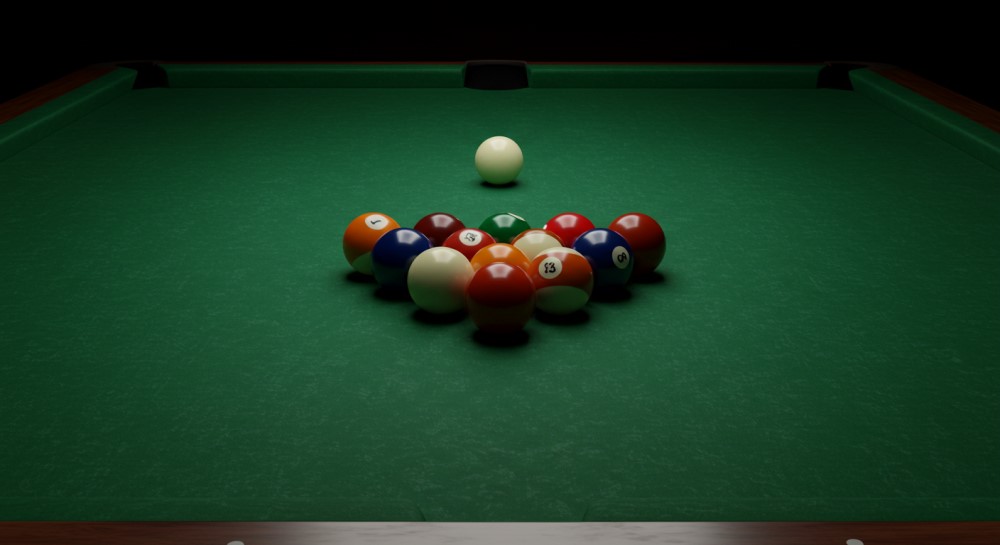
Proper setup is crucial to ensure a fair and smooth game of American pool. Here’s how to rack and start your game the right way.
1. Positioning the Triangle
Place the triangle rack at the foot of the table (the end opposite the cue ball’s starting spot). The apex ball (usually the 1-ball) sits on the foot spot, a small dot often marked on the table’s surface.
2. Arranging the Balls
Arrange all 15 object balls within the triangle. The 8-ball must be placed in the centre of the rack, with one solid and one stripe ball in the two back corners of the triangle. The remaining balls should be randomly placed.
3. Tight Racking
Ensure the balls are tightly packed together within the triangle. A loose rack can affect the break shot and how the balls spread, potentially leading to an unfair advantage.
4. Removing the Triangle
Once all balls are in place and tightly packed, gently lift the triangle upwards and away. Make sure you don’t disturb the formation while removing it.
5. Cue Ball Placement for Break
The cue ball should be placed behind the head string (also known as the baulk line). This is the area at the opposite end of the table from the racked balls.
6. The Break Shot
A legal break in American pool means at least four balls must hit the rails or an object ball must be potted. If the cue ball is potted on the break, it’s a foul and results in ball-in-hand for the opponent.
Getting the rack and break right sets the tone for the rest of the match, so take time to get it spot on.
4. Mastering the Break Shot
The break is more than just a flashy opening – it can determine the momentum of the entire game. Here’s how to approach it like a pro.
Cue Ball Positioning
Place the cue ball within the breaking zone (behind the head string). Many players prefer the centre or just off-centre for better control.
Grip and Stance
Stand with your feet shoulder-width apart, dominant foot behind. Keep your body balanced and your grip relaxed but firm. Don’t tense up – tension kills accuracy and power.
Cueing Action
Deliver the cue in a smooth, controlled manner. It’s not just about power – a solid connection with the front ball (usually the 1-ball) is essential. Follow through after striking to maintain accuracy.
Breaking Tips
-
Aim to hit the 1-ball full-on for an even spread.
-
Apply a touch of topspin to help the cue ball stay in the middle after contact.
-
Don’t just smash it – a powerful but controlled break is more effective.
What Happens After the Break
If you pot a ball and don’t commit a foul, you continue playing. If no balls are potted, your opponent takes over. Potting the 8-ball on the break wins the game only if it’s declared legal before the shot (in some versions, it counts as a win; in others, it requires a re-rack).
Practising your break can give you a huge advantage. A good spread makes pocketing your next shot easier and limits your opponent’s options.
5. Playing Shots and Understanding Turns
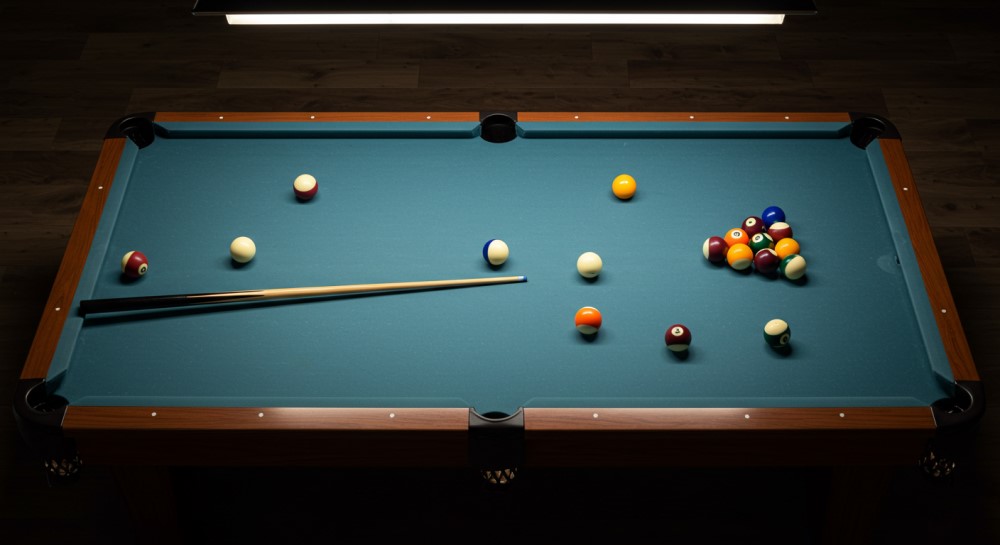
Once the break is over, players alternate turns based on successful shots. Your objective is to pot all your group (solids or stripes) before legally potting the 8-ball.
Identifying Groups
Whichever group (solids or stripes) is legally potted first after the break becomes yours. If multiple balls are potted, the choice goes to the shooter. If no balls are potted, groups remain unassigned.
Shot Rules
On every shot:
- You must hit one of your group first.
- You must pot a ball or cause any ball to hit a cushion.
- Failure to do so is a foul, and the opponent gains ball-in-hand.
Ball-in-Hand
This allows your opponent to place the cue ball anywhere on the table. This is especially powerful in American pool and often leads to a run of successful shots.
Calling Shots
In casual games, shots don’t need to be called, but in more competitive play, players may need to call which ball and pocket they are aiming for. This prevents lucky shots from being counted.
Tactical Play
You can play safeties—shots that don’t attempt to pot but instead position the cue ball in a difficult spot for your opponent. While less flashy, strategic play can be key to winning.
Turnover
Your turn continues as long as you pot legally. Once you miss or foul, it’s your opponent’s go.
Understanding the turn structure helps you control the table and outthink your opponent.
6. Winning the Game: Potting the 8-Ball
Victory in American 8-ball pool doesn’t come until you legally pot the black 8-ball – and it’s not as simple as it looks.
When Can You Go for the 8-Ball?
You must pot all seven of your group (solids or stripes) before attempting the 8-ball. Attempting the 8-ball too early or illegally results in a loss.
Calling the Pocket
The final 8-ball shot must be called. You must specify which pocket the ball is going into before taking the shot. If it goes in another pocket, even if cleanly potted, it counts as a loss.
Avoiding Fouls on the 8-Ball
Potting the cue ball at the same time as the 8-ball is an automatic loss. Likewise, missing the 8-ball entirely or potting it after hitting the wrong ball first also loses the game.
Positioning Before the 8-Ball
Good players spend their last couple of shots setting up a clean, straight shot on the 8-ball. Ideally, leave the cue ball in a position where you can strike directly and confidently.
Psychological Pressure
The final shot carries weight. Whether you’re playing friends or in competition, missing the 8-ball when it’s wide open is agonising. Keep calm, focus on the fundamentals, and take your time.
Winning a game of American pool feels satisfying because you’ve had to balance attack, defence, strategy, and execution. The final black is the reward for every clever cut, skilful spin, and well-planned position shot.
How To Play American Pool: Get on the Table and Practise

Now that you understand how to play American pool—from equipment and setup to rules, strategy, and shot-making—it’s time to grab a cue and get practising. Like any game, the more you play, the better you’ll become.
American pool rewards creative thinkers, precise hands, and cool heads. Whether you’re racking up wins in a league, impressing mates at the pub, or just enjoying a quiet solo session, it’s a game that never stops being fun.
Just remember: every pro started as a beginner. So line up your shot, chalk your cue, and take your best break.
